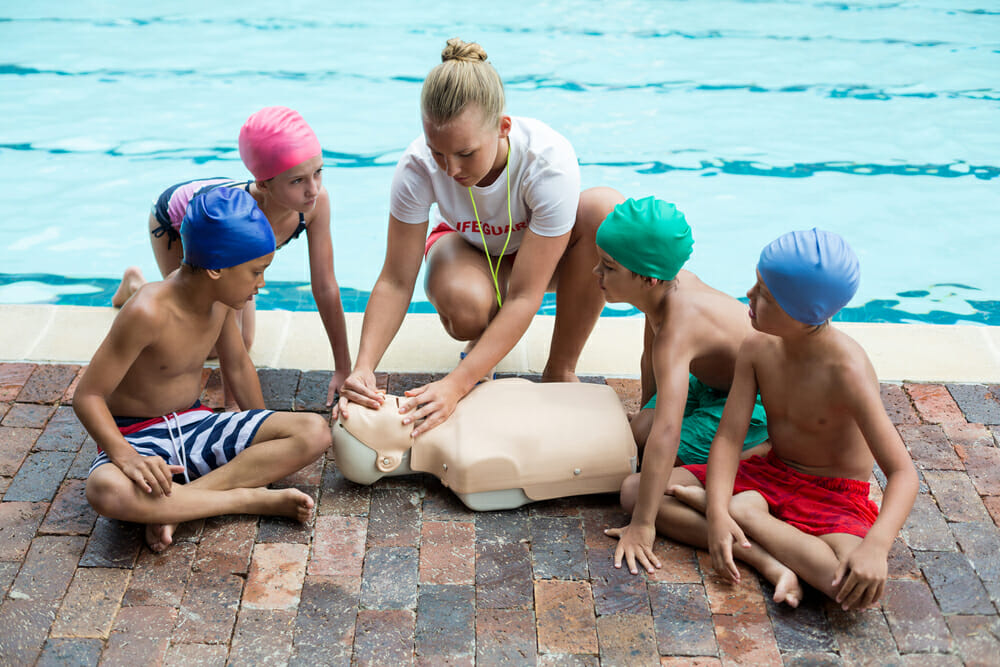
Last Updated On: noviembre 26, 2024
Before using cardiopulmonary resuscitation (CPR) on cardiac arrest patients, it was first renowned as a method used for reviving a person who has drowned. This is also the main reason why most employers require a CPR certification for lifeguard positions.
CPR is now used for both cardiac arrest episodes and for respiratory failures, such as when someone is drowning. Knowing how to provide proper CPR to someone in an event of an emergency is an essential, lifesaving skill. If you spend time around pools or other bodies of water, it’s important that you know how to perform CPR quickly and effectively. In this blog, we will discuss the main reasons why CPR knowledge is so important around swimming pools.
Knowing CPR is an important part of keeping the people in your life safe. There are several reasons why you must know these lifesaving skills if you’re going to be around a pool. The importance of employing timely CPR procedures in the event of drowning has been well-documented.
Whether you’re a lifeguard, a parent, or simply someone who wants to be able to help in the event of an emergency, knowing CPR could quite literally save the life of someone around you. Below are the top reasons why CPR around pools is so essential.
Whether the victim does not know how to swim, a child fell into the water out of the parent’s sight, or another accident occurred, people are at risk of drowning when around water. Like other emergencies, it is important to act immediately. It is very likely that the victim will require CPR. This means that the rescuer should be confident in their CPR skills. Taking a CPR certification course is the best way to have confidence in your skills.
Whenever someone is drowning, lifeguards (or bystanders if no lifeguard is present) must immediately respond to the victim and perform a set of chest compressions and mouth-to-mouth resuscitation right away. This is because when a person drowns, he or she tends to lose consciousness after several attempts of breathing.
In that situation, a person cannot get enough oxygen in their body because their nose and mouth are already submerged from the water. Victims who are resuscitated with CPR have a higher likelihood of surviving their episode of drowning. Waiting for medical assistance and not immediately responding to the victim can lead to the victim’s death.
Swimming pools are a fun way to relax with friends and family. However, safety should always be considered around a pool. It’s recommended to use pools with a lifeguard on duty as they are trained in performing cardiopulmonary resuscitation.
When you’re around a pool, keep a close eye on children and don’t take risks in deep water. Ensuring everyone’s safety is the top priority whenever going out for a swim. Most people would agree that while pools are a place of enjoyment, safety is especially important near water. It is essential for everyone to know the proper CPR to avoid drowning and other emergencies. Taking an online CPR course will ensure that you can protect the people around you are safe.
If you are in the presence of someone who is drowning, there is no time to lose. Early intervention is the key to ensuring survival. Below are the steps you should take if someone is drowning:
Learning how to properly administer CPR is helpful in all kinds of situations. Anytime someone is suffering from an event of cardiac arrest or accidental drowning, proper CPR procedures must be employed while waiting for emergency personnel to arrive.
To ensure that you possess the skills needed to save a life, consider taking our fully online CPR certification course. For more resources, check out our blogs or reach out to us via our Contact page.

